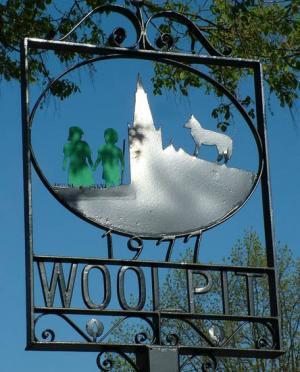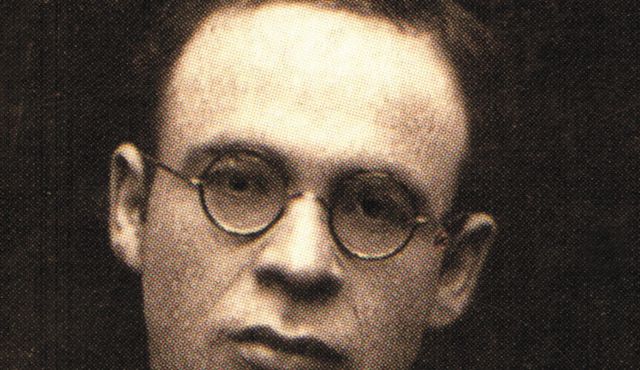It looks like you're using an Ad Blocker.
Please white-list or disable AboveTopSecret.com in your ad-blocking tool.
Thank you.
Some features of ATS will be disabled while you continue to use an ad-blocker.
45
share:
For some time I've wanted to compile a series of threads on lesser discussed mysterious phenomena, occurrences, objects and people. I've decided to
kick things off with a selection of mysterious and enigmatic people, arranged in no particular order. I hope you enjoy!
The Green Children of Woolpit
 Woolpit Village sign
Woolpit Village sign
The story of the Green Children of Woolpit is known from accounts in two historical references: William of Newburgh's, Historia rerum Anglicarum ("History of English Affairs") written around the end of the 12th century and Ralph of Coggeshall's Chronicum Anglicanum, which was written some 30 years later (~1220). From Wikipedia:
Various theories have been proposed to explain the story — some consider it merely a folktale — while others have hypothesized that the children were the orphaned children from a Flemish settlement who may have suffered from hypochromic anemia or "green sickness."
Monsieur Chouchani
 The enigmatic Monsieur Chouchani
The enigmatic Monsieur Chouchani
Almost 50 years after his death, very little is known about the mysterious and influential Jewish scholar Monsieur Chouchani or "Shushani" before his appearance in Paris in the mid-late 1940's. His real name was a closely guarded secret, there are no scholarly writings to be found and nothing of his origins are known.
A large amount of information, such as the accounts excerpted below can be found at this website for a documentary about him that is production:
From Wikipedia:
The Green Children of Woolpit

The story of the Green Children of Woolpit is known from accounts in two historical references: William of Newburgh's, Historia rerum Anglicarum ("History of English Affairs") written around the end of the 12th century and Ralph of Coggeshall's Chronicum Anglicanum, which was written some 30 years later (~1220). From Wikipedia:
One day at harvest time, according to William of Newburgh during the reign of King Stephen (1135–1154),[1] the villagers of Woolpit discovered two children, a brother and sister, beside one of the wolf pits that gave the village its name.[4] Their skin was green, they spoke an unknown language, and their clothing was unfamiliar. Ralph reports that the children were taken to the home of Richard de Calne. Ralph and William agree that the pair refused all food for several days until they came across some raw beans, which they consumed eagerly.[c] The children gradually adapted to normal food and in time lost their green colour.[1] The boy, who appeared to be the younger of the two, became sickly and died shortly after he and his sister were baptised.
After learning to speak English, the children – Ralph says just the surviving girl – explained that they came from a land where the sun never shone and the light was like twilight. William says the children called their home St Martin's Land; Ralph adds that everything there was green. According to William, the children were unable to account for their arrival in Woolpit; they had been herding their father's cattle when they heard a loud noise (according to William, the bells of Bury St Edmunds[9]) and suddenly found themselves by the wolf pit where they were found. Ralph says that they had become lost when they followed the cattle into a cave and, after being guided by the sound of bells, eventually emerged into our land.[1]
Various theories have been proposed to explain the story — some consider it merely a folktale — while others have hypothesized that the children were the orphaned children from a Flemish settlement who may have suffered from hypochromic anemia or "green sickness."
Monsieur Chouchani

Almost 50 years after his death, very little is known about the mysterious and influential Jewish scholar Monsieur Chouchani or "Shushani" before his appearance in Paris in the mid-late 1940's. His real name was a closely guarded secret, there are no scholarly writings to be found and nothing of his origins are known.
A large amount of information, such as the accounts excerpted below can be found at this website for a documentary about him that is production:
This Ben-Chouchan spent his nights on a bench on the upper deck of the ship, bundled up in his coat against the night chill. “The man is unkempt in his outward appearance, dressed in rags, and at first glance you would not give a penny for him,” Giladi wrote. But those who got to know Ben-Chouchan noticed at once that he was no ordinary man. “This is a Torah scholar, the likes of which there are not many, who swims like a champion swimmer in the sea of the Talmud, the midrashim, the earliest and later [biblical] commentators and external sciences,” added Giladi. “His knowledge flows like a fountainhead, and his strange midrashim astound the ears and hearts of his listeners, and his speech is fluent in multiple languages. And if an erudite person is said to be a ‘prodigy,’ then such a one is said to be a ‘genius.’”
“People who met him talk about him as if he were the prophet Elijah. Some say he was an angel, others - a devil. But nobody remained indifferent. This strange Jewish genius became a legend,” explained Tel Aviv-based filmmaker Michael Grynszpan last week.
Adding to the puzzlement surrounding him, “Mr. Chouchan” was apparently in the habit of vanishing and popping up, each time in a new place. Wiesel wrote: “Suddenly he would appear, and then vanish a month or a year later, without leaving a trace. He would accidentally be discovered on the other side of a border … A businessman, a prophet who was dispatched, quite a number of times he went around the world without money, without papers, no one knew how.” Wiesel, too, described the man’s shabby appearance: “He was always filthy, unkempt and dressed in rags. He resembled a vagabond-turned-clown.”
From Wikipedia:
His origins are completely unknown, and his gravestone (located in Montevideo, Uruguay, where he died in January 1968) reads, "The wise Rabbi Chouchani of blessed memory. His birth and his life are sealed in enigma." The text is by Elie Wiesel who paid for this gravestone. The name "Shushani," which means "person from Shushan," is most probably an allegorical reference, or possibly a pun. Elie Wiesel hypothesizes that Chouchani's real name was Mordechai Rosenbaum, while Hebrew University professor Shalom Rosenberg asserts that Chouchani's actual name was Hillel Perlmann.[1]
Although there is no known body of works by Chouchani himself, there is a very strong intellectual legacy seen in the influence on his pupils. By all accounts, Chouchani had the appearance of a vagabond and yet was reputed to be a master of vast areas of human knowledge, including science, mathematics, philosophy and especially the Talmud. Most of the biographical details of Chouchani's life are known from the works and interviews of his various students, as well as anecdotes of people whom he encountered during his lifetime.[2] Chouchani appeared in Paris after the Second World War, where he taught between the years of 1947 and 1952. He disappeared for a while after that, evidently spent some time in the newly formed state of Israel, returned to Paris briefly, and then left for South America where he lived until his death
edit on 2014-9-8 by theantediluvian
because: (no reason given)
Captain Charles Johnson
 The infamous Jolly Roger
The infamous Jolly Roger
William Kidd, Blackbeard, Black Bart — most of us are familiar with the names and deeds of these notorious buccaneers but how many know the source for much of the stories of pirates, buried treasure and even the name Jolly Roger originate? The writings of one man (or woman) largely inform the images your mind conjurers up when you imagine pirates and yet, the true identity of this influential author is unknown. Though the mysterious author claimed in his writings to be himself, a ship's captain, no record of a captain by this name has been found to exist.
Captain Charles Johnson is the (presumed) pseudonym of the author of A General History of the Robberies and Murders of the most notorious Pyrates, published in 1724, a book that is the primary source for biographical data on many of the most infamous scoundrels to sail the seven seas (in the 18th century anyway) and the author himself is a complete mystery!
From the above link to the Wikipedia page for A General History of the Robberies and Murders of the most notorious Pyrates:
The Unknown Patriot
The story goes that the as the signers of the Declaration of Independence were gathered at Independence Hall, their courage faltered as they contemplated the punishment of death for committing treason against the king. It was at this critical juncture that a man rose and delivered an impassioned speech to steel their nerve and cement their conviction. The speech is most commonly known as The Speech of the Unknown (partial excerpt, full text at source):
After delivering the speech, the man is said to have promptly disappeared. Later sources have claimed that he was an anonymous friend and mentor to Founding Fathers, Jefferson and Franklin.
From all appearances, the story of The Unknown Patriot originates from a single problematic source, George Lippard's Washington and His Generals; Or, Legends of the Revolution (1847) and for this reason, he is largely believed to be a fictional character. George Lippard was an immensely popular author in his day and his works are perhaps best described as sensationalized historical fiction. Despite this, there are those who still believe the story has some basis in truth. The mystic, author and lecturer, Manly P. Hall further popularized The Unknown Patriot in his The Secret Destiny of America. Ronald Reagan referenced the story of The Unknown Patriot in a commencement speech delivered in 1957 at Eureka College.
Fictional character turned mythical embodiment of patriotism? Sensationalized account of a real life man? You decide!
MODS: If there's a preferable forum, please move!

William Kidd, Blackbeard, Black Bart — most of us are familiar with the names and deeds of these notorious buccaneers but how many know the source for much of the stories of pirates, buried treasure and even the name Jolly Roger originate? The writings of one man (or woman) largely inform the images your mind conjurers up when you imagine pirates and yet, the true identity of this influential author is unknown. Though the mysterious author claimed in his writings to be himself, a ship's captain, no record of a captain by this name has been found to exist.
Captain Charles Johnson is the (presumed) pseudonym of the author of A General History of the Robberies and Murders of the most notorious Pyrates, published in 1724, a book that is the primary source for biographical data on many of the most infamous scoundrels to sail the seven seas (in the 18th century anyway) and the author himself is a complete mystery!
From the above link to the Wikipedia page for A General History of the Robberies and Murders of the most notorious Pyrates:
A General History introduced many features which later became common in pirate literature, such as pirates with missing legs or eyes, the myth of pirates burying treasure, and the name of the pirates flag the Jolly Roger. The author specifically cites two pirates as having named their flag Jolly Roger, (named after the first Pirate and his crew); Welsh pirate Bartholomew Roberts in June, 1721, and English pirate Francis Spriggs in December 1723.[5] In giving an almost mythical status to the more colourful characters, such as the infamous English pirates Blackbeard and Calico Jack, the book provided the standard account of the lives of many people still famous in the 21st century, and influenced pirate literature of Robert Louis Stevenson and J.M.Barrie.[6]
The book was released in two volumes. The first mostly deals with early 18th-century pirates, while volume II records the exploits of their predecessors a few decades earlier. In the first volume "Johnson" sticks fairly close to the available sources, though he embellishes the stories somewhat. He stretches the truth farther in the second volume, and includes the biographies of three subjects who may be entirely fictional. The book has been hugely influential in shaping popular notions of piracy.
The Unknown Patriot
The story goes that the as the signers of the Declaration of Independence were gathered at Independence Hall, their courage faltered as they contemplated the punishment of death for committing treason against the king. It was at this critical juncture that a man rose and delivered an impassioned speech to steel their nerve and cement their conviction. The speech is most commonly known as The Speech of the Unknown (partial excerpt, full text at source):
Sign! if the next moment the gibbet’s rope is round your neck! Sign! if the next moment this hall rings with the echo of the falling axe! Sign! By all your hopes in life or death, as husbands — as fathers — as men — sign your names to the Parchment or be accursed forever!
After delivering the speech, the man is said to have promptly disappeared. Later sources have claimed that he was an anonymous friend and mentor to Founding Fathers, Jefferson and Franklin.
From all appearances, the story of The Unknown Patriot originates from a single problematic source, George Lippard's Washington and His Generals; Or, Legends of the Revolution (1847) and for this reason, he is largely believed to be a fictional character. George Lippard was an immensely popular author in his day and his works are perhaps best described as sensationalized historical fiction. Despite this, there are those who still believe the story has some basis in truth. The mystic, author and lecturer, Manly P. Hall further popularized The Unknown Patriot in his The Secret Destiny of America. Ronald Reagan referenced the story of The Unknown Patriot in a commencement speech delivered in 1957 at Eureka College.
Fictional character turned mythical embodiment of patriotism? Sensationalized account of a real life man? You decide!
MODS: If there's a preferable forum, please move!
edit on 2014-9-8 by theantediluvian because: (no reason given)
I knew all of them xD
My favorite is the Green Children Woolpit. You should take a look at HybridLibrarian's channel and post more
My favorite is the Green Children Woolpit. You should take a look at HybridLibrarian's channel and post more
edit on 8-9-2014 by Yuuma
because: (no reason given)
Fantastic thread. This is a subject that interests me greatly; the quality of a certain person (?) to seemingly pass between myth and reality.
This story from last year also comes to mind:
www.dailymail.co.uk... .html
This story from last year also comes to mind:
www.dailymail.co.uk... .html
a reply to: theantediluvian
there was a story that i read a long time ago, it was a report about some children suffering from cancer in a spanish hospital
a stranger came onto the ward and spoke to the children , but after he had left and the doctors checked the children
they could find no evidence of cancer in the children .
i have tried to find this story but failed . maybe some of you out there with better computer skills will have better luck .
there was a story that i read a long time ago, it was a report about some children suffering from cancer in a spanish hospital
a stranger came onto the ward and spoke to the children , but after he had left and the doctors checked the children
they could find no evidence of cancer in the children .
i have tried to find this story but failed . maybe some of you out there with better computer skills will have better luck .
I've never heard of Chouchani before, my curiosity as been piqued and I shall be doing some research on him soon no doubt
Thank you again
Thank you again
new topics
-
Nvm
General Chit Chat: 4 hours ago -
OK this is sad but very strange stuff
Paranormal Studies: 9 hours ago -
Islam And A Book Of Lies
Religion, Faith, And Theology: 10 hours ago
top topics
-
Sorry to disappoint you but...
US Political Madness: 13 hours ago, 13 flags -
Watch as a 12 million years old Crab Emerges from a Rock
Ancient & Lost Civilizations: 17 hours ago, 10 flags -
OK this is sad but very strange stuff
Paranormal Studies: 9 hours ago, 7 flags -
Islam And A Book Of Lies
Religion, Faith, And Theology: 10 hours ago, 5 flags -
Nvm
General Chit Chat: 4 hours ago, 2 flags
active topics
-
Here we again... CHINA having mass outbreak of something
Diseases and Pandemics • 29 • : BeyondKnowledge3 -
Matthew Livelsberger said he was being followed by FBI
Political Conspiracies • 73 • : 38181 -
Islam And A Book Of Lies
Religion, Faith, And Theology • 5 • : BeyondKnowledge3 -
OK this is sad but very strange stuff
Paranormal Studies • 4 • : chiefsmom -
Musk calls on King Charles III to dissolve Parliament over Oldham sex grooming gangs
Mainstream News • 184 • : ufoorbhunter -
Can we be certain that Jesus Christ was born on December 25th?
Religion, Faith, And Theology • 35 • : covent -
What Is 'Quad Demic'? Mask Mandate Returns In These US States
Diseases and Pandemics • 41 • : Cracka -
Tesla Cybertruck Explodes in Front of Trump Hotel in Las Vegas
Mainstream News • 230 • : imitator -
Remember when Iraq invaded Kuwait
History • 31 • : Cracka -
Sorry to disappoint you but...
US Political Madness • 16 • : TzarChasm
45
